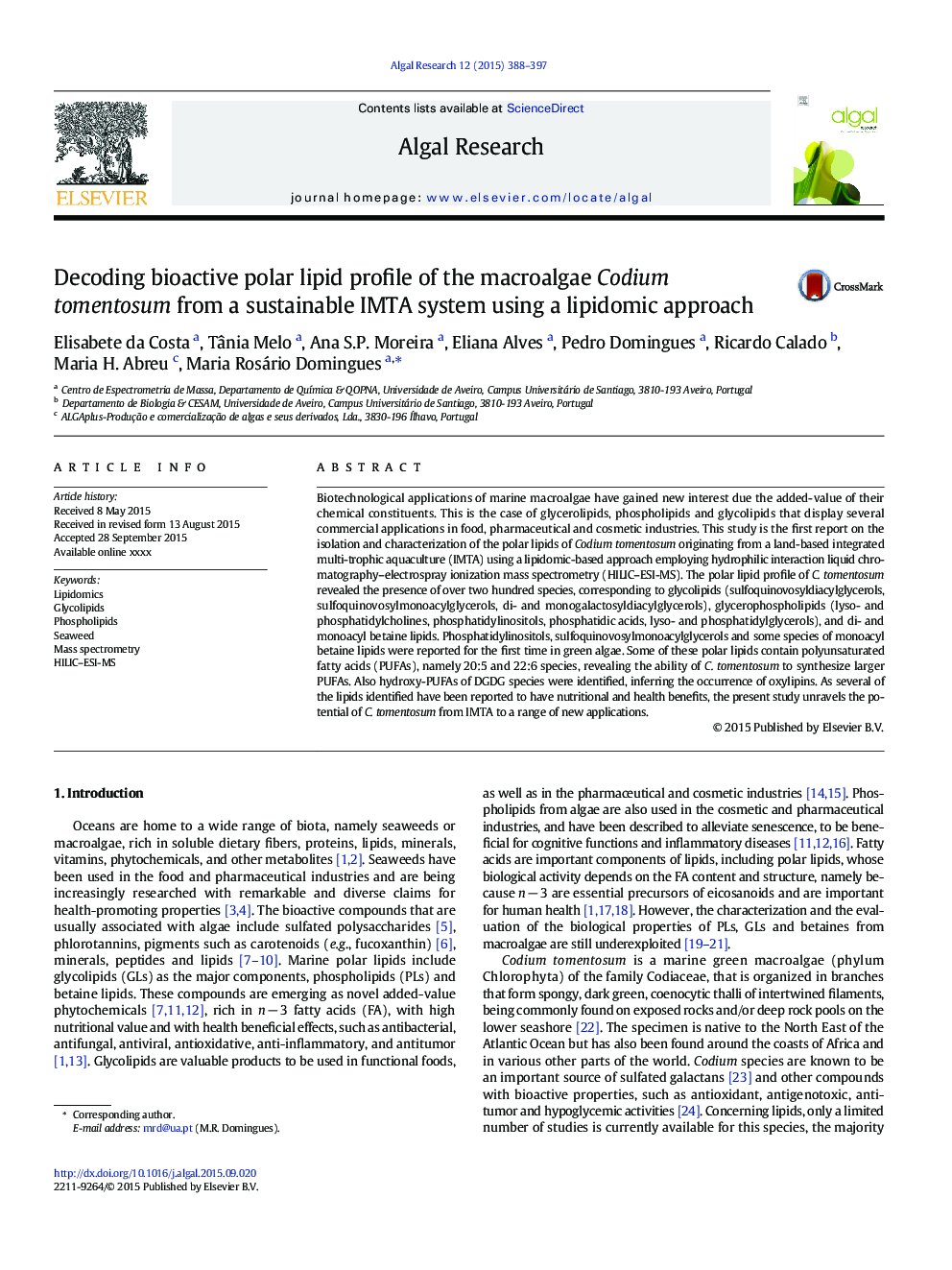| Article ID | Journal | Published Year | Pages | File Type |
|---|---|---|---|---|
| 8087864 | Algal Research | 2015 | 10 Pages |
Abstract
Biotechnological applications of marine macroalgae have gained new interest due the added-value of their chemical constituents. This is the case of glycerolipids, phospholipids and glycolipids that display several commercial applications in food, pharmaceutical and cosmetic industries. This study is the first report on the isolation and characterization of the polar lipids of Codium tomentosum originating from a land-based integrated multi-trophic aquaculture (IMTA) using a lipidomic-based approach employing hydrophilic interaction liquid chromatography-electrospray ionization mass spectrometry (HILIC-ESI-MS). The polar lipid profile of C. tomentosum revealed the presence of over two hundred species, corresponding to glycolipids (sulfoquinovosyldiacylglycerols, sulfoquinovosylmonoacylglycerols, di- and monogalactosyldiacylglycerols), glycerophospholipids (lyso- and phosphatidylcholines, phosphatidylinositols, phosphatidic acids, lyso- and phosphatidylglycerols), and di- and monoacyl betaine lipids. Phosphatidylinositols, sulfoquinovosylmonoacylglycerols and some species of monoacyl betaine lipids were reported for the first time in green algae. Some of these polar lipids contain polyunsaturated fatty acids (PUFAs), namely 20:5 and 22:6 species, revealing the ability of C. tomentosum to synthesize larger PUFAs. Also hydroxy-PUFAs of DGDG species were identified, inferring the occurrence of oxylipins. As several of the lipids identified have been reported to have nutritional and health benefits, the present study unravels the potential of C. tomentosum from IMTA to a range of new applications.
Related Topics
Physical Sciences and Engineering
Energy
Renewable Energy, Sustainability and the Environment
Authors
Elisabete da Costa, Tânia Melo, Ana S.P. Moreira, Eliana Alves, Pedro Domingues, Ricardo Calado, Maria H. Abreu, Maria Rosário Domingues,
